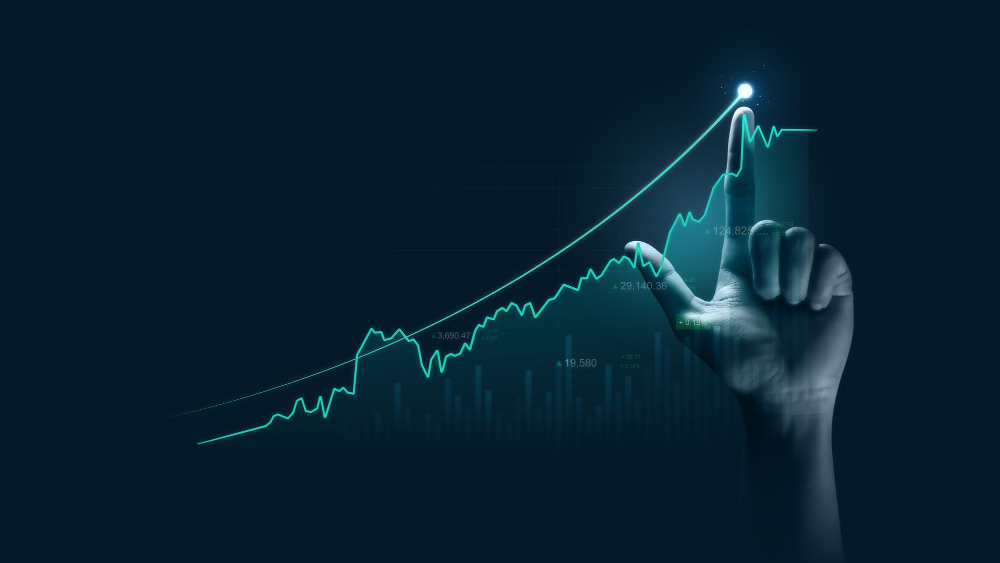Inflation: What Is It?Your financial situation is significantly impacted by inflation, which happens when the cost of products and services rises over time. Learn about inflation, its causes, how it is measured, how to recognize its symptoms, and how to safeguard yourself.

Why does inflation occur?
Simply put, inflation happens when production prices rise OR when consumer demand for goods and services grows more quickly than supply. Many factors can contribute to inflation. The three basic types of inflation are most frequently used to group all these causes.
Inflation that is driven by consumer demand as a whole is called demand-pull inflation. Businesses may sell more goods and services than planned if customers start spending more money than usual. The remaining stock becomes more valuable, and prices may climb if these enterprises cannot meet the rising consumer demand.
This type of inflation frequently occurs when there is a high level of consumer confidence, such as when salaries are rising, and the unemployment rate is low.
Cost-push inflation takes place when production costs increase. These higher production costs, which have nothing to do with consumer demand, could reduce overall supply and a subsequent rise in pricing to make up the difference.
This type of inflation is frequently seen when the price of oil rises and affects the cost of manufacturing processes. For instance, the cost-push inflation in the 1970s was partly caused by the energy crises of the decade.
Wage-Price Spiral with Built-In Inflation
Workers want higher wages in order to keep up with the cost of living.
People anticipate higher income to maintain their level of living and lifestyle when prices increase due to cost-push or demand-pull inflation. Companies raise the cost of their products and services in response to higher salaries. Because of this, people now have higher living expenses and expect higher incomes.
Inflation and a Rise in Money Supply
The majority of people associate inflation with government money printing.
Demand-pull and cost-push A rise in the total amount of money in circulation can occasionally cause inflation. Only when money is printed more quickly than the economy expands can the money supply result in inflation. Remember that the money supply includes credit, loans, mortgages, and physical currency.
Financial Policy
Bank lending becomes more affordable when central banks reduce interest rates. Then, banks will increase the money they lend to consumers and businesses. Spending more money drives up demand, which drives up prices.
Budgetary Policy
If the government lowers taxes, offers stimulus payments, or increases benefits, people will have more money to spend.
Businesses might raise wages or add workers if company taxes are reduced. Spending increases when people have more money in their pockets, which grows pricing and demand.
Rates of exchange
The currency’s value declines about other currencies when more money is in use. As a result, imported goods cost more since your cash is now worth less. To increase the competitiveness of local products, governments may also decide to lower exchange rates. Imports will likewise become more expensive as a result of this.
How is inflation calculated?
A price index, which measures price changes across a particular set of goods and services, is used by economists to gauge inflation. The primary indices are the Personal Consumption Expenditures (PCE) and Consumer Price Index (CPI).
Both serve the same purpose: displaying the typical change in the price of frequent purchases made by American families of goods and services. This rate is given as a percentage; generally, an increase of more than 2% is reason for alarm.
How do interest rates respond to inflation?
Despite the complexity of the issue, monetary policy at the federal level can help manage inflation.
The Federal Reserve, America’s central banking system, increases the federal funds rate in response to growing inflation rates. An exclusive interest rate that applies to loans made between commercial banks.
When the federal funds rate increases, interest rates on mortgages and other types of credit also climb, making borrowing money more expensive. Higher borrowing costs can aid in reducing consumer and corporate spending by allowing supply chains to catch up to production, which can lower prices.
Doing this will reduce inflation and stabilize supply and demand without having longer-term effects like a recession. The Fed may cut interest rates when inflation is low once more, making borrowing money easier and promoting expenditure.
Four steps to get ready for inflation
You’ll be better able to safeguard your funds from inflation’s consequences once you comprehend the economic fundamentals behind it. Think about the following in times of rising inflation.
Examine your spending plan to find areas where you may cut back. The rising cost of your necessities is a result of rising prices. You can find extra room in your budget for a larger utility bill and more expensive groceries by carefully reviewing your budget and considering your usual spending.
When you can, keep saving money; keep an emergency savings account with enough money to last three to six months in case of a financial emergency.
High-yield savings accounts, which often offer better interest rates than conventional ones, should be considered for the best return.
Put off making large purchases. When inflation is vital, taking out a large debt like a mortgage is not cost-effective. Consider delaying the purchase of a home or automobile until the economy has stabilized.
Put more money into it. Avoid the temptation to stop making monthly investments to save money immediately. It’s crucial to keep contributing to any retirement funds.
Consumers may feel anxious during times of inflation but try not to worry. Understanding the underlying causes will help you better prepare for increased expenditures. They are often transient.



